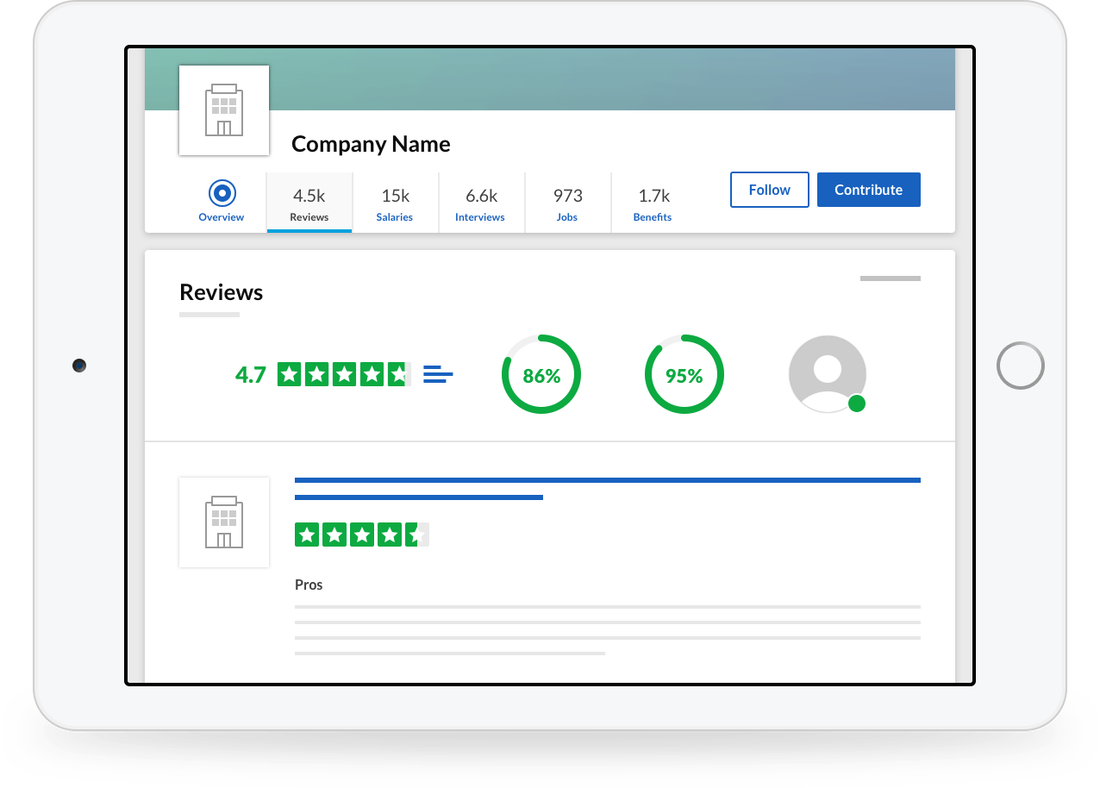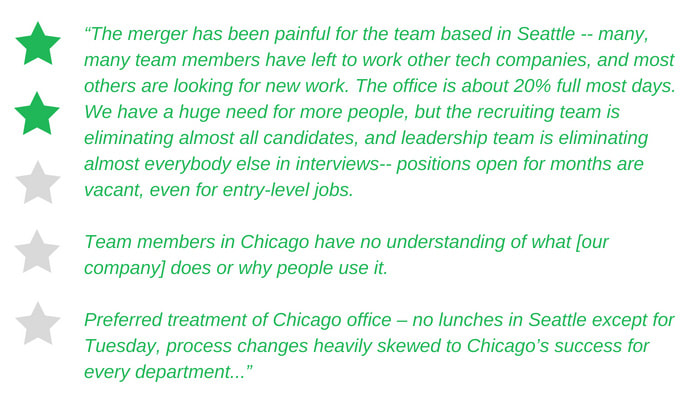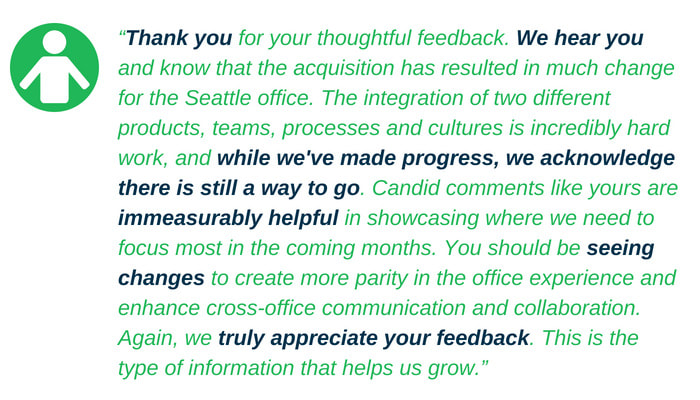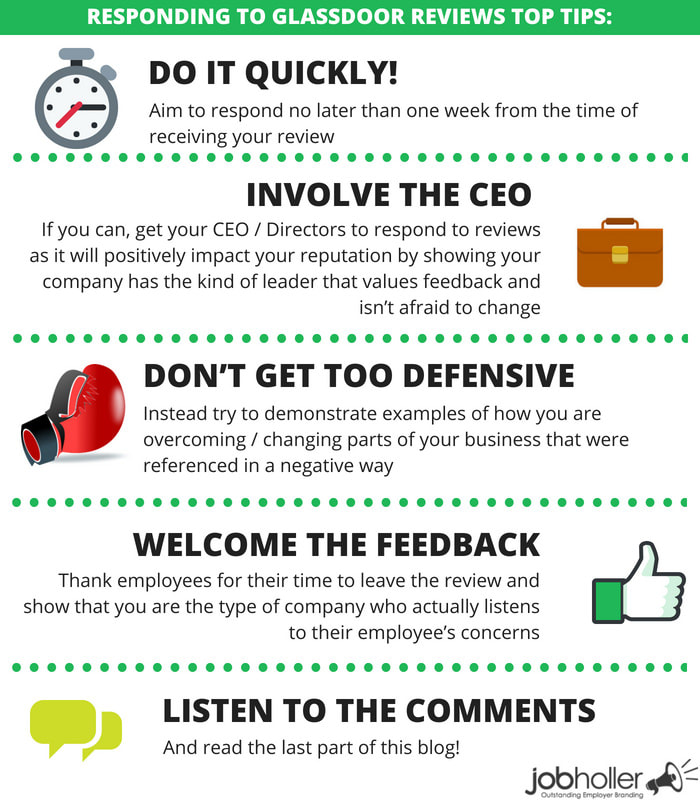The site they are heading to most? Glassdoor: The online site that hosts millions of global company reviews, CEO ratings and salary reports. The average Glassdoor Company rating is 3.4/5, which is made up of a combination of excellent employers such as Google (4.5 rating) and Facebook (4.4 rating) alongside companies who have a heavy stream of dreadful employee reviews. Even the best employers fall victim of the occasional “toxic employee” who chooses to vent their frustrations on the platform, so whether you are combatting a stream of complaints or simply want to work your way to Glassdoor’s Best Places to Work list then here are 6 steps to help you get there!
Don’t be surprised if you are faced with lots of negative reviews, after all it’s always the disgruntled few employees that choose to vent their opinions online, where as happy employees are less likely to review (without prompting) because they have no real reason to!
If however you spot a trend where a high percentage of employees are leaving negative reviews then your route to improve your Glassdoor rating is going to be a bit more tricky (we’ll get to that in point 6), because only great companies can achieve great Glassdoor reviews! If you have a toxic culture and are ignoring potential issues then no amount of online reputation management is going to get your unhappy and disengaged employees to leave you a glowing Glassdoor review!
2. Claim your profile
Claiming your Glassdoor profile is really easy and free to do. All you’ll need is access to a company email address to verify that you have permission to act on the company’s behalf. Once you’ve got access you’ll be able to login and see your full profile activity with analytics of who has visited your profile, as well as be able to update your specific company information. There is also a paid option which can unlock additional features such as the ability to pin your best Glassdoor review to the top of your page, but you do not need to spend money to improve your Glassdoor rating.
3. Define your Glassdoor Strategy (and reach out to happy employees!)
4. Discover those key moments of truth in the employee lifecycle
5. Respond to your reviews
It can be tempting to bury your head in the sand and ignore the negative Glassdoor reviews you DO get, especially when you don’t agree with them and believe they have been posted by disgruntled ex-employees! You may even think that you would draw more attention to the posts (which is the last thing you want). But consider this scenario:
You are recruiting for a hard-to-fill role at your company, the perfect candidate sees your advert and decides to look into your employer brand in more detail. They land on your Glassdoor profile and are met with this review:
If you are thinking of responding to your Glassdoor reviews here are our top tips:
Remember, there is no point improving your Glassdoor rating on the surface if the negative points your employees raise are actually true. Doing this will only impact negatively on your retention levels (and probably land you back where you started in a few months). Instead think of your Glassdoor as a platform that gives you regular and honest feedback from employees (past and present) so you can identify what is, and isn’t working. Chances are you’ll identify trends in comments and feedback before it spirals into a bigger problem in your company and you’ll have the opportunity to listen, react and implement change before this happens. For example if you receive consistent complaints about work-life balance you might want to introduce a flexi-time option for your employees to combat the issue (before everyone hands their notice in and jumps ship to a competitor).
Ultimately, a positive Glassdoor review starts with a great employer so no matter where you are with your Glassdoor journey remember to take on board all comments and look to improve from within! Also check out our blog on “Unlocking the power of Glassdoor” for your business.












